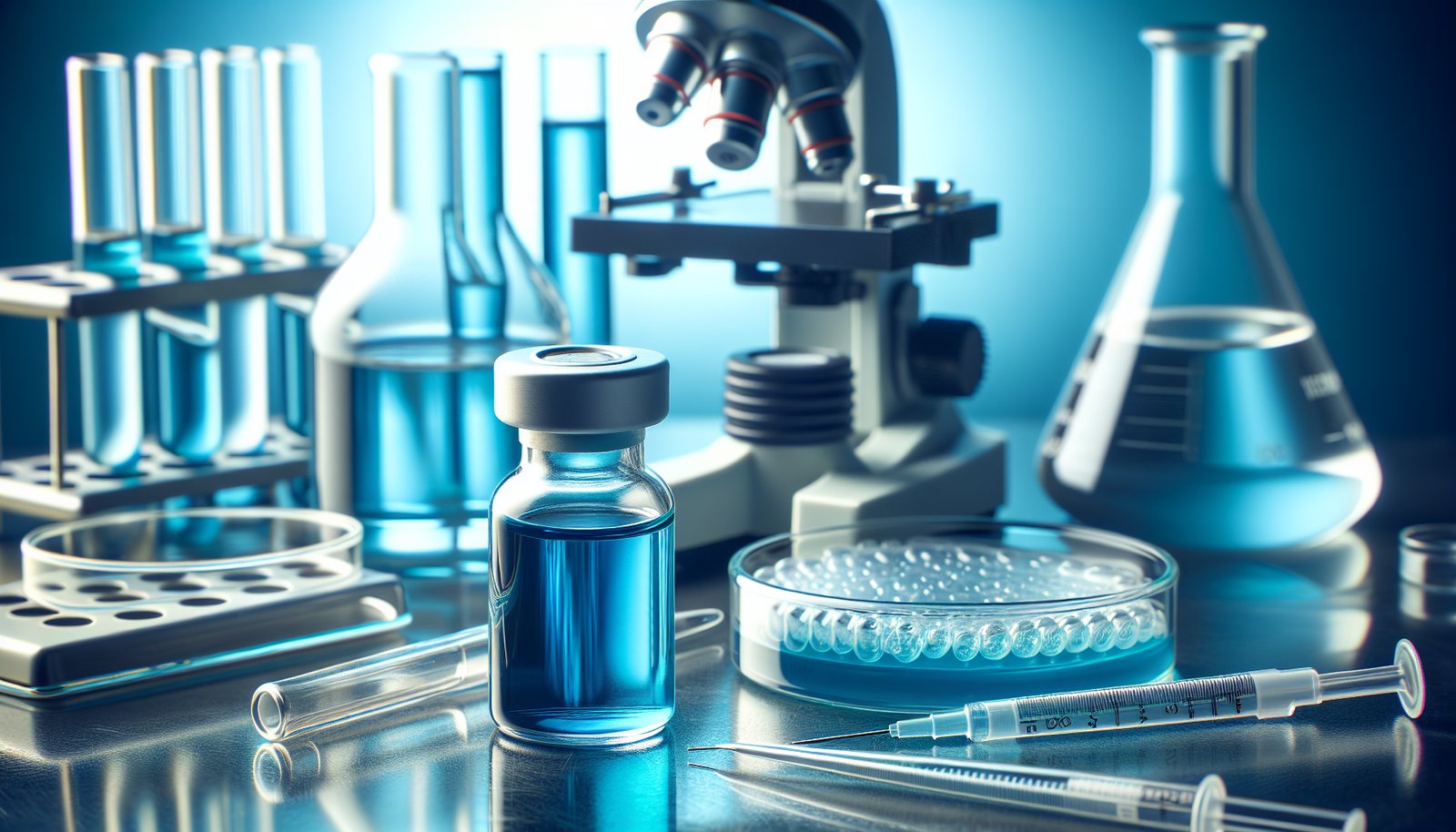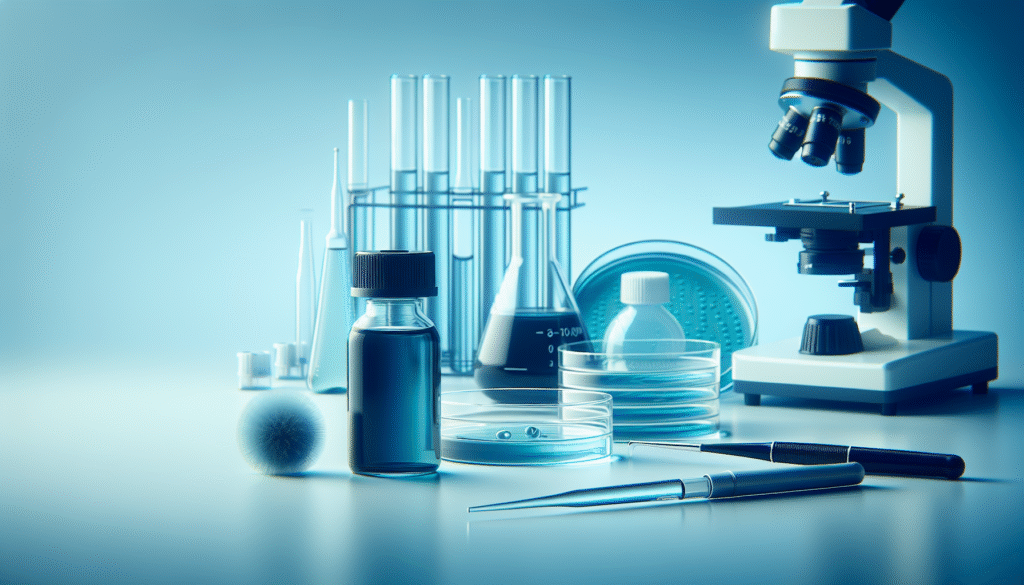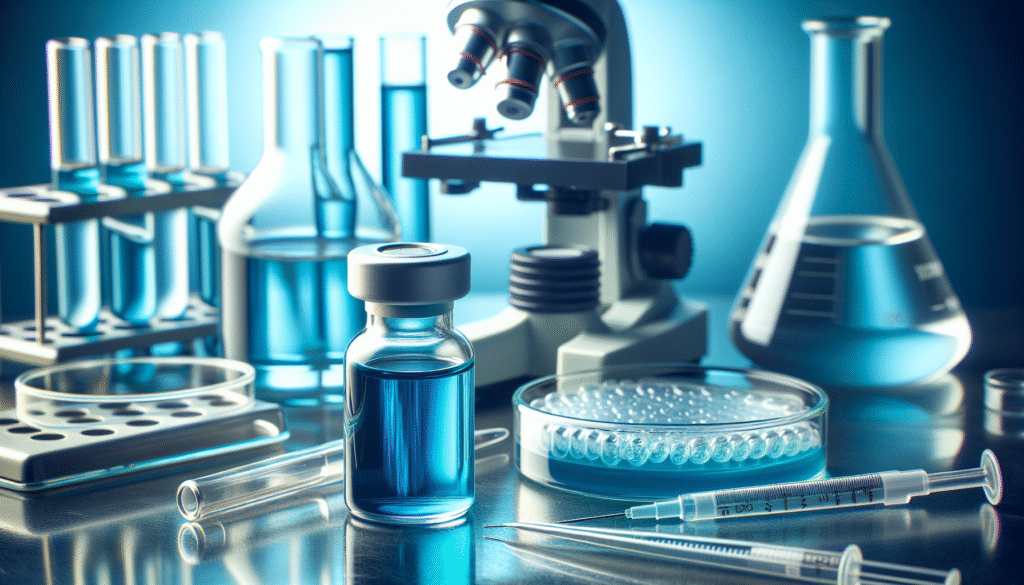
Have you ever wondered how a simple dye can hold such significant importance in the field of microbiology? In your explorations of microbial life, understanding how to utilize methylene blue can enhance your research capabilities and help you uncover a wealth of information about cellular structures and functions.
Introduction to Methylene Blue
Methylene blue is a synthetic thiazine dye that primarily serves as a biological stain. It has been a staple in microbiology laboratories due to its ability to interact with cells and tissues, making them easier to visualize under a microscope. Its applications range from staining to therapeutic uses, emphasizing its versatility in scientific research and clinical settings.
Chemical Properties of Methylene Blue
Understanding the chemical properties of methylene blue is crucial for its effective application in microbiology.
-
Chemical Structure: Methylene blue, known scientifically as methylthioninium chloride, has a complex structure that allows it to bind to various cellular components, such as nucleic acids and proteins.
-
Solubility: The dye is soluble in water and slightly soluble in alcohol, which is critical for preparing staining solutions.
-
pH Sensitivity: Methylene blue exhibits changes in color depending on the pH of the solution, which can be leveraged in various experiments.
Applications of Methylene Blue in Microbiology
Methylene blue is utilized in several microbiological applications. Understanding these uses is essential for leveraging the dye effectively in your laboratory practices.
1. Staining Microbial Cells
One of the most common uses of methylene blue is in staining microbial cells to improve visibility under the microscope. The dye binds to nucleic acids, allowing you to observe cellular structures more clearly.
-
Simple Staining: This method involves applying methylene blue directly to a fixed smear of bacteria. After a brief incubation, rinsing with water enhances the contrast between the stained cells and the background.
-
Determining Cell Morphology: By observing the stained cells, you can identify various morphological characteristics, such as shape (cocci, bacilli) and arrangement.
2. Vital Staining
Methylene blue serves as a vital stain in microbiology. It can distinguish between live and dead cells based on cellular membrane integrity.
- Live-Dead Staining: In a mixed population of cells, viable cells take up the dye, while non-viable cells do not. This property can be assessed quantitatively or qualitatively, providing insights into cell viability and population health.
3. Staining Eukaryotic Cells
In addition to its application in prokaryotic microorganisms, methylene blue is also effective in eukaryotic cell staining.
-
Cellular Components: Methylene blue binds to RNA, allowing visualization of nucleoli and other RNA-rich areas within eukaryotic cells.
-
Nuclear Staining: The dye’s affinity for nucleic acids makes it particularly useful for staining the nucleus in cell preparations, helping in the analysis of cell cycle stages.

Preparation of Methylene Blue Staining Solutions
Preparing a methylene blue solution requires careful consideration of concentration and purity to ensure optimal staining performance.
Concentrations for Staining Solutions
Concentration plays a vital role in the effectiveness of methylene blue as a stain. Here are common concentrations:
| Application | Methylene Blue Concentration | Remarks |
|---|---|---|
| Bacterial Staining | 0.1% to 1% (w/v) | Standard concentration for microscopy. |
| Vital Staining | 0.5% (w/v) | Suitable for live-dead differentiation. |
| Eukaryotic Cell Staining | 0.1% to 0.5% (w/v) | Adjust according to specific cell type. |
Safety Considerations
While working with methylene blue, adhering to safety protocols is essential to ensure both personal safety and environmental protection.
Personal Protective Equipment (PPE)
Always wear appropriate PPE when handling methylene blue. This includes:
- Gloves: To protect your skin from staining.
- Lab Coat: To shield your clothing from spills.
- Safety Goggles: To prevent eye exposure.
Disposal Protocols
Methylene blue can be hazardous to the environment. Follow these disposal guidelines:
- Collect used staining solutions in designated chemical waste containers.
- Never dispose of methylene blue down the drain. Consult your institution’s waste disposal guidelines.

Methodology for Staining
A systematic approach to staining with methylene blue will yield consistent and interpretable results.
1. Preparing a Bacterial Smear
-
Sample Collection: Obtain a sample from the culture broth or solid medium.
-
Smear Preparation: Place a small amount of the sample on a clean microscope slide, spread it thinly, and allow it to air dry.
-
Fixation: Heat-fix the smear by passing it through a flame, ensuring the bacteria adhere to the slide.
2. Staining Procedure
- Apply Methylene Blue: Add a few drops of the methylene blue solution to the fixed smear.
- Incubation: Allow the dye to sit for 1-2 minutes to stain the cells adequately.
- Rinsing: Gently rinse the slide with distilled water to remove excess dye.
- Observation: Allow the slide to air dry completely before examining it under a microscope.
Microscopic Observation
Once you have stained and prepared your sample, the next step is to observe it under a microscope.
Microscopy Techniques
-
Bright-Field Microscopy: This is the most common technique used for observing stained samples. The cells will appear blue against a light background.
-
Phase Contrast Microscopy: If available, phase contrast microscopes enhance the visibility of transparent specimens, providing additional detail in cellular structures.
Troubleshooting Staining Issues
Occasionally, you may encounter unexpected results from your staining procedures. Here are common troubleshooting tips:
Poor Staining Results
-
Dilution Issues: Ensure your methylene blue is at the correct concentration. Too dilute may yield weak staining.
-
Fixation: Inadequate fixation can result in poor adhesion of cells to the slide. Ensure complete fixation is achieved.
Excess Dye Residue
- Rinsing: Excessive dye on the slide might obscure results. Ensure gentle rinsing without removing the stain from the cells.
Advanced Applications of Methylene Blue
Beyond simple staining, methylene blue finds innovative uses in microbiological research.
1. Redox Indicator
Methylene blue serves as a redox indicator due to its ability to switch between oxidized and reduced states. This property is utilized in various biochemical assays.
- Biochemical Assays: Employing methylene blue in assays can help determine the redox state of microorganisms and evaluate metabolic activity.
2. Antimicrobial Properties
Interestingly, methylene blue exhibits antimicrobial activity against various bacteria and fungi.
- Therapeutic Uses: Researchers are investigating methylene blue as a potential treatment for infections, leveraging its dual role as a dye and antimicrobial agent.
Conclusion
The versatility of methylene blue in microbiology makes it an invaluable tool for researchers. By understanding its properties, applications, and the correct methodologies for staining, you can enhance your research outcomes significantly. Whether you are assessing cell viability or observing cellular structures, mastering the use of methylene blue will undoubtedly bolster your microbiological endeavors. With each application, you will uncover a deeper understanding of the microscopic world that is vital for advancing scientific knowledge.